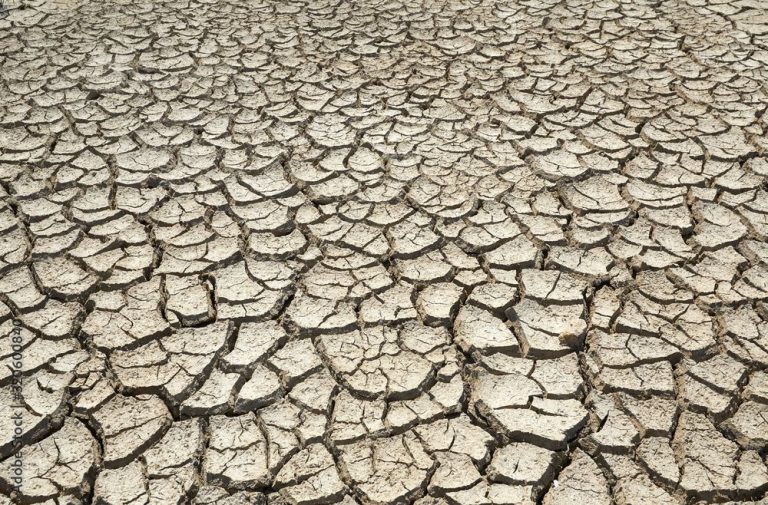What Makes Georgia Clay Red?
The distinctive red color of Georgia’s clay soil is the result of its unique geological history and mineral composition. In this article, we will explore how this clay formed over millions of years, the minerals that lend it the red hue, and the weathering processes that bring the color to the surface. We’ll also touch on the clay’s other properties, where similar red clays can be found, some interesting facts about Georgia red clay, and its environmental impacts. To understand why this soil stands out, we need to start at the beginning and look at the forces that shaped it over eons of time.
Geological History
The red clay deposits found throughout Georgia were formed millions of years ago during the Cretaceous period. This was the last period of the Mesozoic era, lasting from about 145 to 66 million years ago.
During this time, Georgia was located closer to the equator and had a humid, subtropical climate. The slow weathering of feldspar-rich igneous and metamorphic rocks over millions of years resulted in the accumulation of thick clay deposits across the state.
The cool, moist conditions allowed for intense chemical weathering that broke down the mineral feldspar into clay minerals and iron oxides. This weathering process is what gives Georgia’s clay its distinctive red hue.
While the specific origins are still debated, most geologists agree that the red clay deposits formed in place over extremely long time spans from the natural weathering of the underlying bedrock in the region.
Mineral Composition
The distinct red color of Georgia clay comes primarily from its mineral composition. The main minerals that give Georgia clay its reddish hue are iron oxides, including hematite and goethite. Iron oxide minerals contain iron combined with oxygen and are very common in clays and soils. These minerals occur naturally as a reddish or rust color. The high iron oxide content of Georgia clay results in an intense red color.
In addition to iron oxides, Georgia clay contains other minerals like kaolinite and aluminum oxides. Kaolinite is a clay mineral that forms from the chemical weathering of minerals like feldspar. It is white in color but does not negate the red hues from the iron oxides. Aluminum oxides like gibbsite also occur in Georgia clay and contribute to the mineral composition.
The combination of these minerals gives Georgia clay its distinctive red color. The high iron oxide content is the primary contributing factor, with kaolinite and aluminum oxides also playing a role. This mineral profile occurs naturally in the clay deposits across Georgia due to the specific geologic history and soil chemistry conditions in the region.
Weathering Process
The red color of Georgia clay is primarily the result of chemical weathering processes over long periods of time. Chemical weathering involves the chemical transformation of minerals within rocks and soil through exposure to air, water, acids, and other environmental factors.
One of the most important chemical weathering processes that gives Georgia clay its distinctive red hue is the oxidation of iron. Iron oxide minerals are abundant in the parent rock materials that ultimately break down into the clay soils found across Georgia. When iron is exposed to oxygen and water, it oxidizes and forms iron oxide compounds like hematite (Fe2O3) and goethite (FeO(OH)). These iron oxide compounds have a distinct reddish, rusty coloration.
Over the course of millions of years, the gradual oxidation of iron through chemical weathering transforms the color of clay deposits from grayish tones to vivid red hues. The redder the clay, the more iron oxides it contains. So the deep red color of Georgia clay is a testament to the ancient weathering processes that have been slowly occurring in the region’s mineral-rich soil for eons.
Other Properties
Georgia’s red clay has some unique and useful properties beyond just its vibrant color. Three of the most notable properties are its plasticity, moisture retention, and versatility of uses.
Plasticity refers to clay’s ability to deform without cracking or losing its cohesiveness. When mixed with water, Georgia clay becomes very plastic and moldable. This allows it to be shaped into bricks, pottery, tiles, and other products. The high iron oxide content in the clay gives it strong plasticity.
Georgia clay also has a high capacity for retaining moisture. The clay’s fine particle size and layered mineral structure help it hold water molecules effectively. This moisture retention makes the clay sticky and gives it a dense, thick quality when wet. It allows the clay to sustain plants and crops even during dry periods.
The combination of strong plasticity and moisture retention lend Georgia clay to many uses. It has served as a building material for centuries, with clay bricks and tiles being common in old architecture across Georgia. The clay is also ideal for making pottery and ceramics. And its moisture retention makes it very useful for agricultural purposes and producing sturdy clay foundations for buildings and infrastructure.
Geographic Distribution
Georgia clay deposits are found mainly in central and southern parts of the state. The largest and most notable deposits are in the Coastal Plain region, which spans from Columbus down to the Florida border. Within this broad swath, some of the most concentrated areas of red clay occur in counties like Macon, Pulaski, Burke, Richmond, and Decatur.
The clay was originally laid down millions of years ago when Georgia was underwater. As the land mass emerged, the clay deposits were exposed at the surface. However, you’ll notice the northern part of the state has less red clay. This is because glaciation during past ice ages scraped away most of the clay in the Piedmont region.
So in summary, while small amounts of red clay can be found sporadically across Georgia, the largest contiguous deposits remain further south where thick layers still exist undisturbed. This gives the central and southern counties their distinctive red clay landscapes and soils.
Comparison to Other Clays
Georgia’s red clay differs from other clays found in the state and elsewhere. The most notable comparison is to the white kaolin clay that is also abundant in Georgia. While both clays were formed from the same parent rock of granite, kaolin clay remained white because it did not contain as much iron oxide.
Kaolin clay has a finer texture and its white color makes it more desirable for cosmetics, paper, and porcelain production. Red clay’s iron oxide gives it a richer hue but limits its commercial uses compared to kaolin. However, red clay remains an important part of Georgia’s geology and landscapes.
Interesting Facts
Georgia’s red clay soil is so iconic that Georgia is nicknamed the “Red Clay State.” Georgia red clay has been an important part of the state’s history and economy since the early 1800s when it began being used to make bricks. In the Antebellum South, slave labor was used to dig up red clay and transport it to brickyards where both slaves and free workers shaped it into bricks. These bricks were used to construct many historical buildings and homes across Georgia. Georgia was the leading producer of bricks in the South by the 1840s.
Today, commercially manufactured brick is more common, but some traditional brickyards in Georgia still handcraft bricks from native red clay using historic methods. Many cities like Atlanta, Macon, and Savannah showcase historic red brick architecture. The distinct dark red color and unique properties of Georgia red clay remain an iconic part of the state’s heritage.
Environmental Impacts
Georgia’s ubiquitous red clay can have significant environmental consequences. Due to its high clay content, Georgia’s soil is prone to erosion, especially on sloped or deforested land.
Erosion can strip away topsoil, reducing fertility and agricultural productivity over time. Additionally, the displaced sediment can clog streams, harm aquatic life, and increase the risk of flooding downstream.
Many farming practices in Georgia contribute to erosion, such as excessive tilling and leaving fields bare after harvest. However, erosion can be mitigated through conservation methods like no-till farming, terracing sloped land, and planting cover crops.
Beyond erosion, Georgia’s red clay presents other environmental challenges. The clay soil retains water, requiring careful irrigation practices to avoid overwatering. It also has a high capacity to adsorb fertilizers and pesticides, increasing the risk of runoff pollution.
With care and proper management techniques, Georgia’s distinctive red clay can be farmed sustainably. But uncontrolled erosion remains an ever-present threat due to this soil’s intrinsic characteristics.
Conclusion
In summary, the distinct red color of Georgia’s clay soil comes from its unique geological history and mineral composition. The red hue is the result of the weathering of iron oxide minerals over millions of years. Compared to other clays, Georgia red clay stands out for its coloration, texture, and properties. While problematic when it comes to foundations and construction, the red clay has become an iconic part of the Georgia landscape.
The rich red clay found across Georgia plays an important environmental role. It provides nutrients for agriculture and forests, helps filter and retain water, and gives character to the state’s scenery. Georgia’s red clay soils are an integral part of the region’s natural and cultural heritage.


